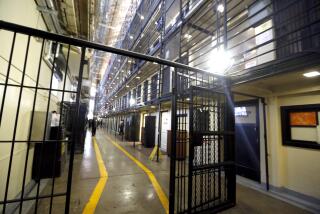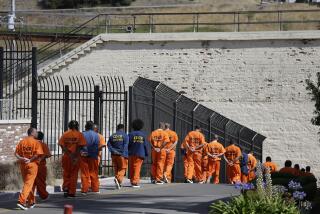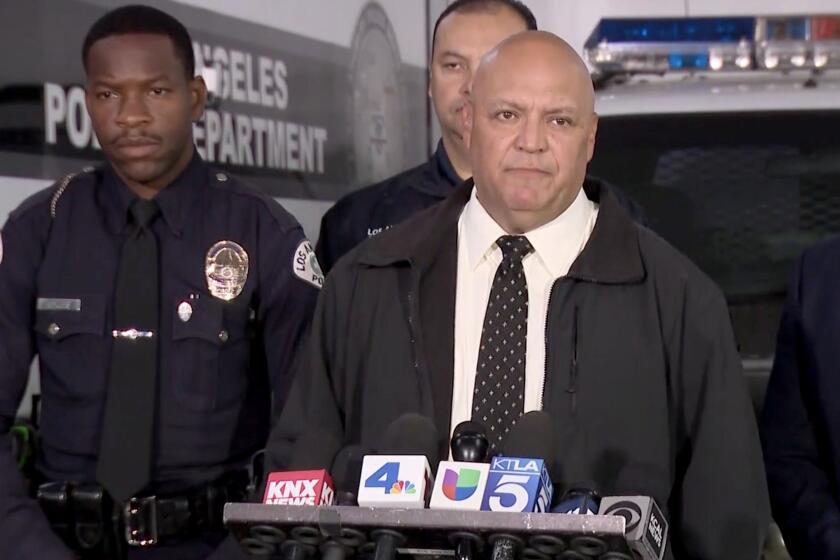Charles Manson, Rose Bird, Caryl Chessman and California’s wrenching death penalty debate
One of Elisabeth Semel’s earliest memories of the death penalty in California was the 1960 execution of Caryl Chessman. She remembers seeing her father upset.
She became a criminal defense lawyer and went on to defend inmates convicted of capital crimes, running a death penalty clinic at UC Berkeley.
Kent Scheidegger, a former commercial lawyer, was inspired to join the fight for the death penalty after voters ousted California Chief Justice Rose Bird and two colleagues in 1986 for overturning death sentences.
He said the courts were thwarting the people’s will and he joined a pro-death penalty group to persuade judges to uphold death sentences.
Advocates and others on both sides went on to endure decades of frustration in California’s wrenching wars over the death penalty.
READ MORE: These are the 737 inmates on California’s death row »
This week, Gov. Gavin Newsom put his own imprint on the saga, declaring a moratorium on executions while he was in office. But the death penalty remains lawful in California, and neither side is ready yet to lay down arms.
The battle started with a 1972 California Supreme Court decision that declared the state’s death penalty unconstitutional. The decision spared the lives of Charles Manson, Sirhan Sirhan and more than 100 others.
Supporters of the death penalty gradually resurrected the law to pass constitutional muster, and California juries have condemned scores of people to die.
Bird and two other Democratic appointees to the Supreme Court were replaced with conservatives, and the newly formed court routinely upheld death sentences.
The state’s execution logjam broke with the 1992 lethal gassing of Robert Alton Harris, who had killed two teenage boys in San Diego. It was the state’s first execution in 25 years.
Another death row inmate, David Mason, was executed in the gas chamber the following year.
Then a federal court decision in 1996 forced the state to close the gas chamber and execute by lethal injection. Later that year, serial killer William Bonin died by the needle, four years after Harris. Executions continued sporadically.
By the time Republican appointee Ronald M. George was California’s chief justice, there was a massive backlog of death penalty appeals. The cost to the state of trying the cases and handling the appeals was crushing.
George, a former prosecutor who had previously defended California’s death penalty, declared the system “dysfunctional.” An inmate on death row was more likely to die from old age than execution, he said.
In all, 13 inmates have been executed in California since the restoration of the death penalty. More than 100 condemned inmates have died of natural causes or suicide during that time.
A state commission determined that the death penalty would work in California only if the state put in a massive infusion of money.
No one seemed inclined to provide that kind of money, but the death penalty remained on the books and death row began running out of room.
Actor Mike Farrell, a death penalty abolitionist, spent many execution nights outside San Quentin State Prison as peaceful protesters held candles and sang hymns.
He met with two California death row inmates before their executions, including Stanley Tookie Williams in 2005.

Williams, a former Los Angeles gang leader, was convicted of killing four people. In prison he wrote books for young people urging them to eschew gangs.
Farrell also met with then-Gov. Arnold Schwarzenegger, another actor, to plead for Williams’ life.
“I just don’t understand the point in killing this man,” Farrell recalled telling Schwarzenegger. “If you commit him to life in prison without parole, he can keep doing the work he is doing with kids.”
Schwarzenegger said Williams had to admit guilt and express remorse, Farrell said. Williams insisted he did not commit the murders and died by lethal injection.
Another inmate was executed before a federal judge in Northern California decided in 2006 that the state’s three-drug method of execution violated the U.S. Constitution. The lethal cocktail exposed inmates to the risk of cruel and unusual suffering, the judge found.
No one has been executed in California since that decision.
“We would have had 20 executions between then and now had it not been for that ruling,” Scheidegger said.
READ MORE: Gov. Gavin Newsom’s opposition to the death penalty appears destined for a test »
Supporters of capital punishment managed in recent years to defeat two ballot measures to abolish the death penalty and won narrow passage in 2016 of a measure intended to speed up executions.
Gov. Jerry Brown, who personally opposes the death penalty, played no role in the campaigns. His last two terms in office exasperated both supporters and opponents of capital punishment.
Scheidegger said he believed that Brown, who as governor oversaw the department in charge of executions, stymied their resumption by moving extremely slowly to devise an execution protocol. At one point, Scheidegger sued Brown to force action.
Semel called those years a time of “deep disappointment.” Both Brown and Atty. Gen. Kamala Harris, now a candidate for president, said they personally opposed the death penalty but “didn’t do anything about it,” Semel said.
“Those are the things that stick with me,” she said.

On Monday, Farrell went to Sacramento to meet with Newsom and other opponents of the death penalty.
“This is what I am going to do,” he said Newsom told the group.
Newsom said he would meet with capital punishment supporters to discuss his plans the following day. Farrell told the governor his decision was “true heroism.”
“Most of the governors who do this sort of thing do it at the end of their terms, not at at the beginning,” Farrell said. “He said, ‘No, this is the right time.’ I was blown away.”
News broke late Tuesday that Newsom was using his power of reprieve to place a moratorium on executions.
Scheidegger was livid. He agreed that Newsom had the right to grant reprieves to condemned inmates, but accused him of “flagrantly violating” the law by withdrawing an execution protocol and shutting down the death chamber.
Sacramento County Dist. Atty. Anne Marie Schubert, who had campaigned to keep the death penalty and speed it up, said that when she heard the news she thought of a mother whose young son was tortured and sodomized for 10 hours before he was stabbed more than 40 times. His killer was on death row.
She also thought of Marc Klass, who “has waited a quarter of a century” to see the killer of his daughter, Polly, 12, executed. Newsom gave him “less than 24 hours’ notice” of his decision, Schubert said
Farrell watched Newsom’s news conference on television. He said he cried.
Twitter: @mauradolan
More to Read
Start your day right
Sign up for Essential California for news, features and recommendations from the L.A. Times and beyond in your inbox six days a week.
You may occasionally receive promotional content from the Los Angeles Times.







